Hermeus reveals flying prototype in its pursuit of a reusable hypersonic jet
- By Alex Hollings
Share This Article
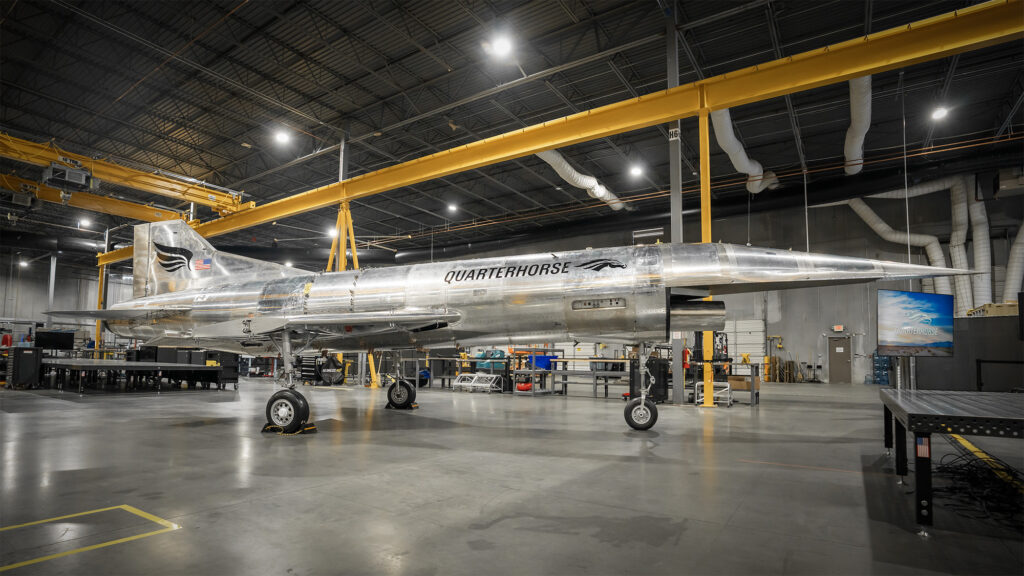
Atlanta-based aviation firm Hermeus revealed their new Quarterhorse Mark 1 flying technology demonstrator on social media on Thursday. This marks a significant step toward building, what the company promises to be, the world’s first reusable hypersonic aircraft.
Hermeus completed ground taxi testing of their first prototype, the Quarterhorse Mk 0, in January of this year, meant to validate the platform’s major subsystems as production continued on the Mk 1, which is now set to start flying in the coming months.
Meet Quarterhorse Mk 1 – our first aircraft that will take to the skies this summer at the legendary Edwards Air Force Base. pic.twitter.com/LBpJQYtMKv
— Hermeus (@hermeuscorp) March 28, 2024
“Mk 1 is our second fully-integrated vehicle built in just the past year. This rate of iteration highlights the new standard Hermeus has set for the pace of aircraft development: One aircraft per year,” Hermeus wrote on X (formerly Twitter).
Hermeus’s Quarterhorse program calls for the development and production of a series of increasingly advanced technology demonstrators meant to mature the company’s propriety hypersonic propulsion system, known as Chimera. This turbine-based combined-cycle (TBCC) engine is effectively two jet engines in one: the first (a turbojet) is good for powering an aircraft at lower speeds; while the second (a ramjet) is good for powering it at higher ones.
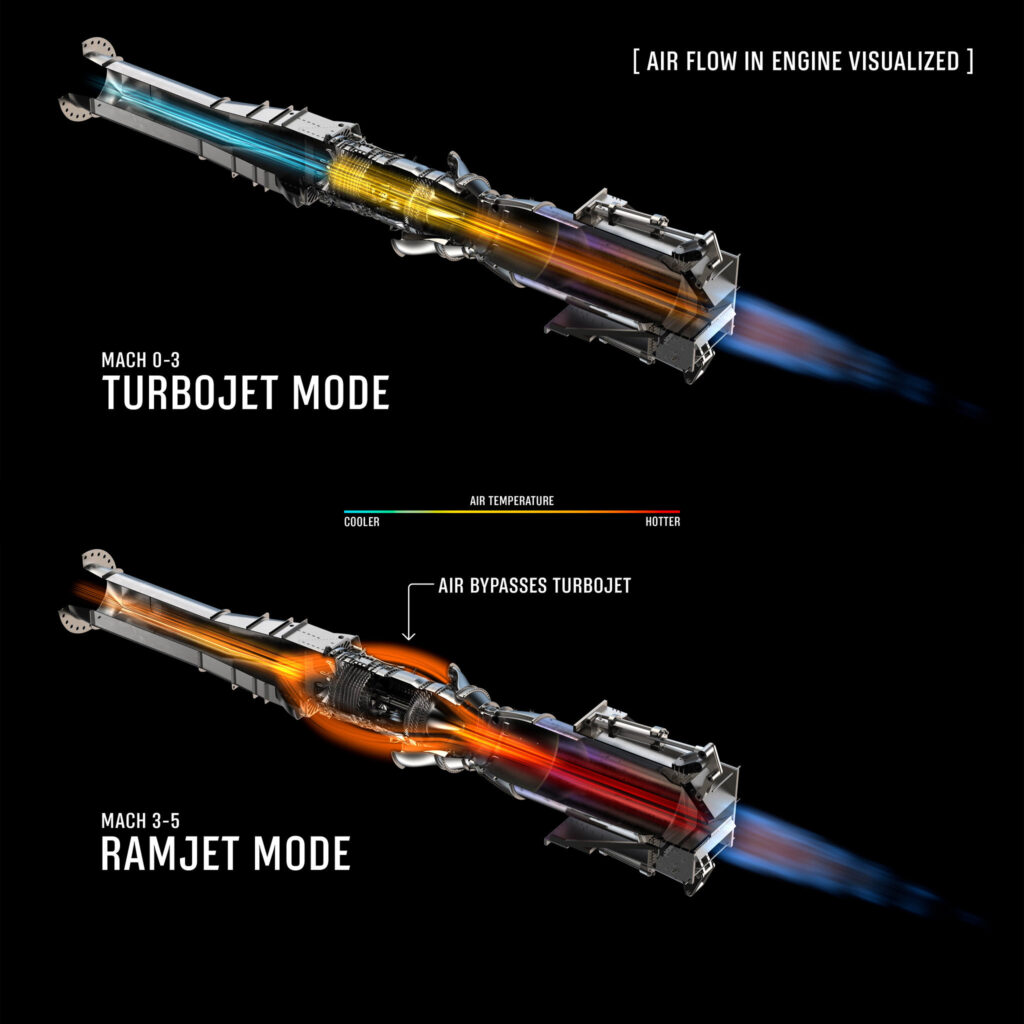
In January, Quarterhorse Mk 0 allowed for the testing of power and control subsystems during taxi tests at the Arnold Engineering Development Complex (AEDC) in Tullahoma, Tennessee. Quarterhorse Mk 1, revealed on Thursday, will be the company’s first flying prototype, meant to demonstrate the aircraft’s ability to take flight and fly under power at subsonic speeds.
“Each aircraft in the Quarterhorse program progressively increases in complexity, building on the learnings of prior builds,” Hermeus said on social media.
Related: Hermeus’s hypersonic aircraft takes another big step toward flight
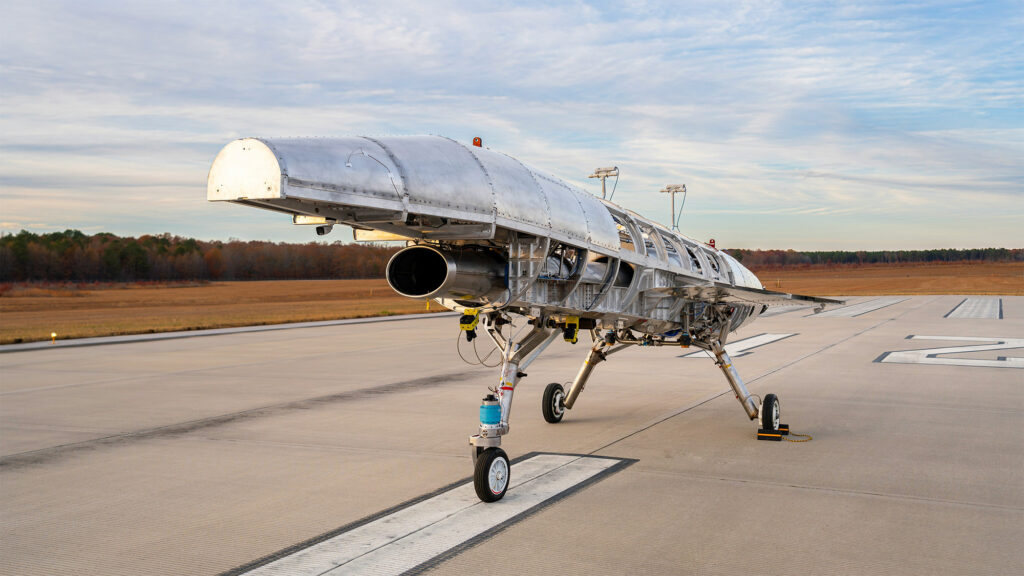
Quarterhorse Mk 1 will be followed by the supersonic Mk 2, also revealed in a render earlier this week. The Mk 2 platform will be powered by Chimera’s larger and more powerful successor, Chimera II, which will eventually propel the aircraft to speeds over Mach 4 dethroning the SR-71 Blackbird as the world’s fastest reusable jet in history.
And this isn’t some distant pipedream. Hermeus’s use of advanced titanium 3D printing and iterative design improvements has already allowed the company to produce both Quarterhorse Mk 0 and Mk 1 in extremely short order, and it intends to continue that rapid operational tempo moving forward.
“We designed and built this airplane – from scratch, like literally napkin to airplane – in 204 days,” Hermeus CEO, AJ Piplica, wrote on X. “Let that sink in. 204 days. The standard here is about 1,400 days – 3.5 years. We missed the P80 record by 61 days. This is the way,” he added referring to Lockheed Martin’s P-80 WWII jet.
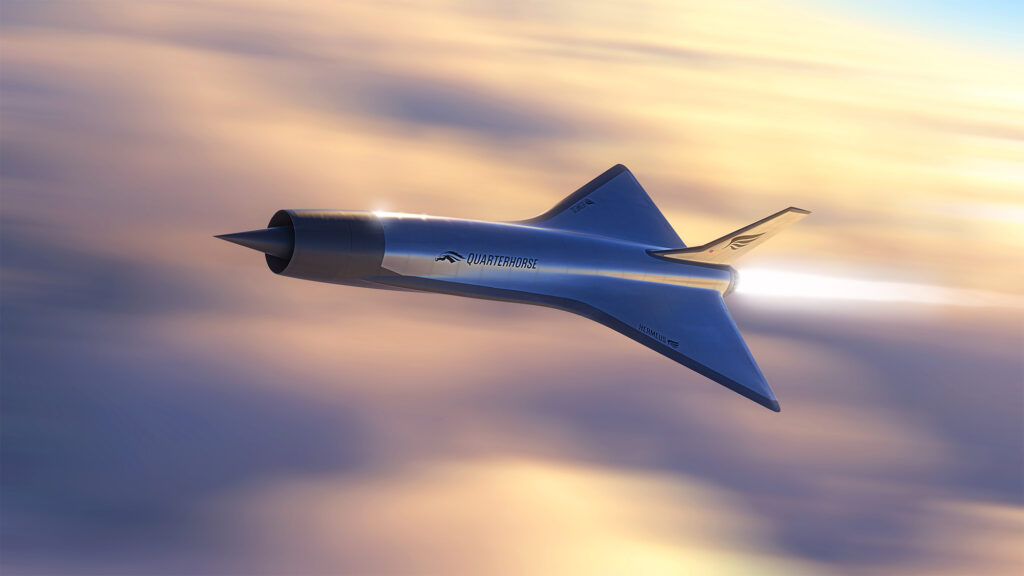
The Chimera powerplant inside Quarterhorse Mk 1 utilizes a General Electric J85 turbojet as its turbine basis, which is capable of producing up to 5,000 pounds of thrust under afterburner. Hermeus demonstrated Chimera’s ability to transition from J85 turbojet power to full ramjet power in high-speed wind tunnel testing in November 2022.
Chimera II, which will power Quarterhorse Mk 2, will swap that J85 turbojet out in favor of a much larger and more powerful Pratt & Whitney F100 turbofan – the same engine that has powered a variety of high-performance fighters like the F-15 and F-16 over the years. The F100 will provide Chimera II with nearly six times more thrust under turbofan power, at just shy of 30,000 pounds.
Hermeus intends to field Quarterhorse Mk 2, powered by Chimera II, for flight testing as soon as next year.
Related: America’s hypersonic ARRW missile may not be dead after all
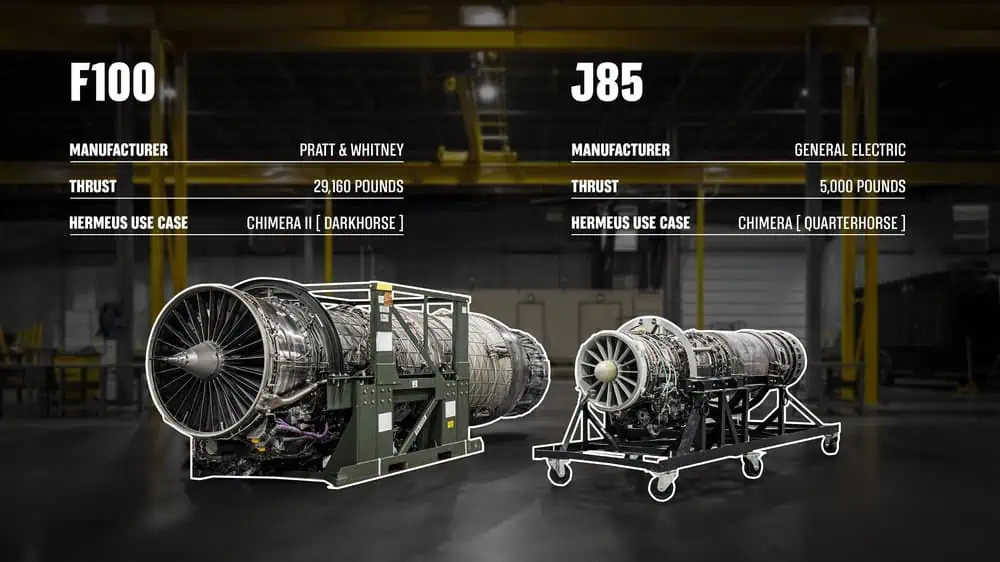
These recent announcements, like several previous ones from Hermeus, include some small changes from the company’s earliest projected developmental steps – which is a feature rather than a bug. Hermeus’s iterative approach to leveraging off-the-shelf technology to accomplish things no firm ever has before is nimble by design. As each technology demonstrator reveals new lessons about the nature of supersonic and then hypersonic flight (defined as flight above Mach 5), Hermeus incorporates those lessons into its following design and projected timetables.
“The analysis uncertainties of extreme speed design are still large enough to drive architectures,” Hermeus COO Skyler Shuford posted alongside this week’s announcement. “So rather than falsely assume those right now, the team is set up to rip out intermediate working aircraft products and learn.”
Once Quarterhorse is mature, Hermeus will move on to their next aircraft, known as Darkhorse, intended specifically for military applications with the U.S. Air Force. During Sandboxx News’ visit to Hermeus’s classified facility, Shuford explained that Darkhorse will potentially be powered by not one, but two F100-based Chimera II engines allowing for significantly larger payloads and speeds above Mach 5.
Hermeus predicts its operational Chimera-powered hypersonic aircraft will cost as little as $100 million per jet – a price tag that would be far easier for the Pentagon to stomach than recent predictions for similarly fast hypersonic missiles, which are estimated to cost as much as $106 million each, and obviously can be used only once.
But before Darkhorse can ride, Quarterhorse will have to fly – and prove to the world, and Hermeus’ investors like RTX and the U.S. Air Force, that the company’s novel approach to high-speed aviation is viable.
Read more from Sandboxx News
- The Army doesn’t have enough PSYOP soldiers to fight the information war, inspector general says
- What really happened when F-22 Raptors squared off against the Eurofighter Typhoon?
- Built over 150 years ago, the first machine gun is still influential
- Dark Eagle is one of the US military’s most promising hypersonic programs
- How much does it cost to train an Air Force pilot? A LOT
Related Posts
Sandboxx News Merch
-

‘AirPower’ Classic Hoodie
$46.00 – $48.00 Select options This product has multiple variants. The options may be chosen on the product page -

‘Sandboxx News’ Trucker Cap
$27.00 Select options This product has multiple variants. The options may be chosen on the product page -

F-35 ‘Lightning’ Framed Poster
$45.00 – $111.00 Select options This product has multiple variants. The options may be chosen on the product page

Alex Hollings
Alex Hollings is a writer, dad, and Marine veteran.
Related to: Breaking News
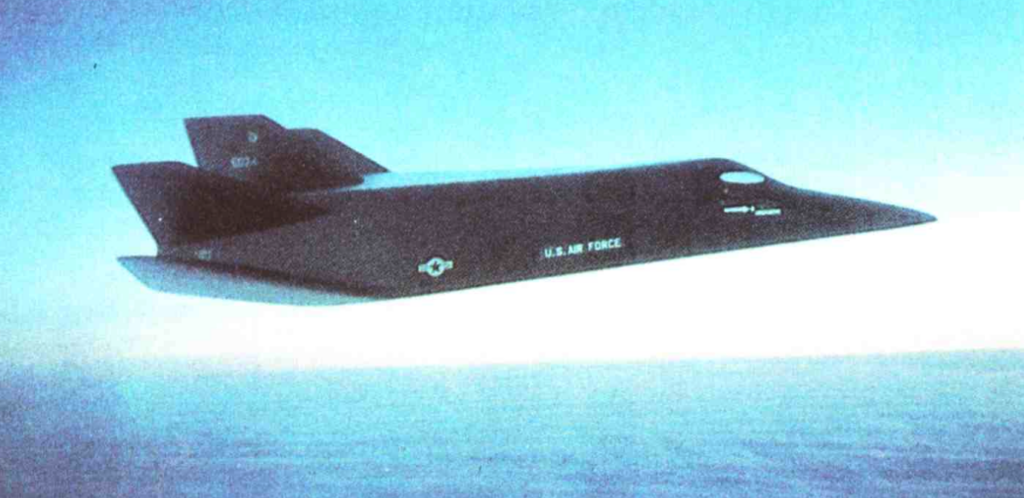
Game-changing military aircraft that were canceled before they could change the game
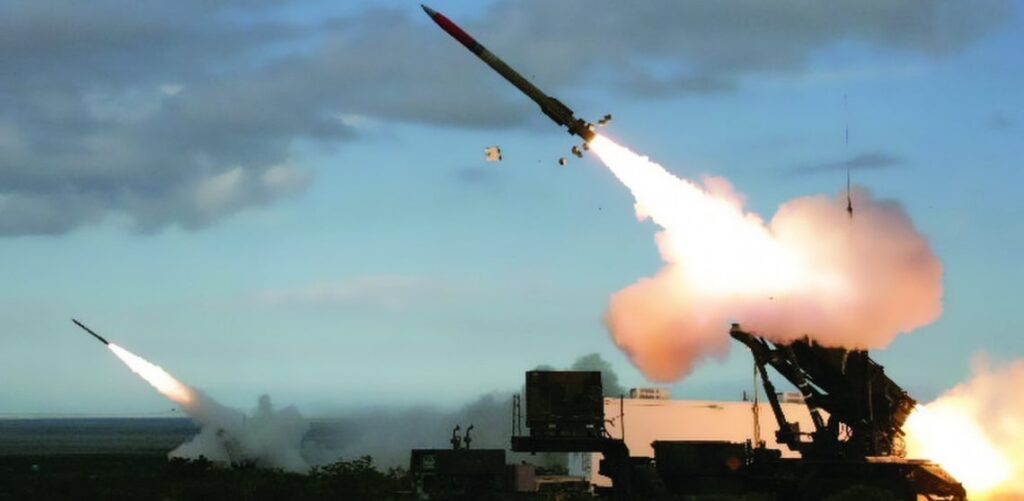
The ultimate guide to the Patriot air defense system

Anduril’s Roadrunner is a unique reusable missile interceptor

The AGM-181 LRSO missile will modernize America’s nuclear triad
Sandboxx News
-

‘Sandboxx News’ Trucker Cap
$27.00 Select options This product has multiple variants. The options may be chosen on the product page -

‘AirPower’ Classic Hoodie
$46.00 – $48.00 Select options This product has multiple variants. The options may be chosen on the product page -

‘AirPower’ Golf Rope Hat
$31.00 Select options This product has multiple variants. The options may be chosen on the product page -

‘Sandboxx News’ Dad Hat
$27.00 Select options This product has multiple variants. The options may be chosen on the product page
